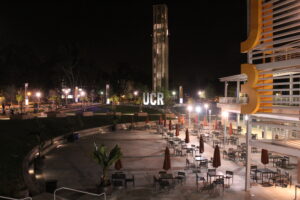
The University of California system made history with its record enrollments for California residents. In recent years, California residents have not been accepted as often as out-of-state residents when applying to the UCs. In part, this increase is due to the funding Gov. Gavin Newsom tied to the enrollment of more in-state students. In California, accepting more in-state students creates a system where students can prosper where they live.
With higher enrollment of residents, it allows them to attend a premier university with a reduced financial burden. Tuition cost should never be a reason why students are unable to attend college but unfortunately, it is. The increased enrollment allows residents to attend college with a decreased financial burden. Since in-state tuition is lower than out-of-state tuition, it makes it more affordable for California residents to attend UC schools.
UCs admitting more California residents could enhance community engagement. Their proximity to their home communities enables students to actively participate in local activities and community service, fostering a sense of connection. This involvement has the potential to enrich residents’ educational experiences and contribute to the improvement of their communities.
The impact of these acceptances on the UCR community means that the promise of helping students achieve social mobility can be fulfilled. Maybe these acceptances can help UCR regain their social mobility title of number one. Equivalently, higher acceptance rates can help with the prosperity of residents planted in California. Being in a school home to extraordinary citrus developments makes UCR an excellent place to foster student growth.
Having more California residents attend local colleges can positively impact the economy. Educated individuals often contribute to the workforce, pay taxes and potentially start businesses. This leads to economic growth and development within the state rather than pushing Californian talent out. Supporting local growth ensures that the community benefits from the talents of its residents. Investing in local education signals a long-term commitment to community development and prosperity, creating a positive cycle of educational attainment and overall well-being.
Few states possess a university system as extensive as California’s, so non-residents face a disadvantage in their home state due to the absence of a comparable system. Additionally, this disparity extends to their application process for the UCs, further exacerbating the challenges they encounter. Although the preference for residents in university acceptances may appear as a drawback for out-of-state students, it acknowledges past challenges faced by residents in UC admissions. This resident preference aims to rectify historical enrollment inequities rather than disadvantage out-of-state applicants.
Even though the UCs’ recent increase in California resident admissions is undoubtedly a positive stride, there remain notable barriers in the pursuit of equitable education overall. The absence of affirmative action, in place since Bakke vs. UC, has compounded challenges for disadvantaged minority students navigating the complexities of college applications. Furthermore, financial burdens persist even among those successfully enrolled at UC institutions, casting a shadow on the academic journey.
Overall, the UC system’s increased acceptance of California residents is undeniably a positive development. By opening the doors more to the admission of in-state students, the UCs contribute to a more inclusive educational landscape and foster opportunities for a diverse range of California residents. This progressive step signifies a commitment to the state’s educational ecosystem and lays the groundwork for a more promising future for aspiring students. As the UCs continue to navigate challenges and implement initiatives, the trajectory appears optimistic, offering a brighter and more equitable educational landscape for California students.







